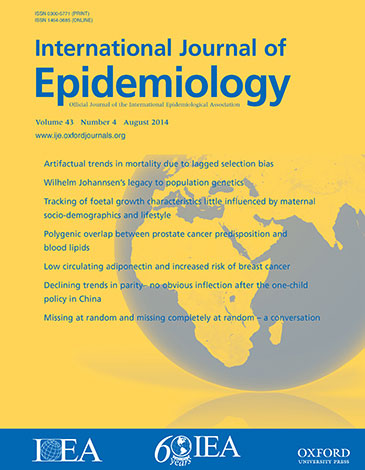Development of a registration interval correction model for enhancing excess all-cause mortality surveillance during the COVID-19 pandemic
IF 6.4
2区 医学
Q1 PUBLIC, ENVIRONMENTAL & OCCUPATIONAL HEALTH
引用次数: 0
Abstract
Background Estimates of excess deaths provide critical intelligence on the impact of population health threats including seasonal respiratory infections, pandemics and environmental hazards. Timely estimates of excess deaths can inform the response to COVID-19. However, access to timely mortality data is challenging due to the time interval between the death occurring and the date the death is registered and available for analysis (‘registration interval’). Development Using data from the New South Wales, Australia, Births Deaths and Marriages Registry, we developed a Poisson regression model that estimated near-complete weekly counts, for a given week of death, from partially-complete death registration counts. A 10-weeks lag was considered, and a 2-year baseline of historical registration intervals was used to correct lag weeks. Application Validation of estimated counts found that the root-mean-square error (as a percentage of mean observed near-complete registrations) was less than 7% for lag week 3, and <5% for lag weeks 4–9. We incorporated this method utilizing an existing rapid weekly mortality surveillance system. Counts corrected for registration interval replaced observed values for the most recent weeks. Excess death estimates, based on corrected counts, were within 1.2% of near-complete counts available 9 weeks from the end of the analysis period. Conclusions This study demonstrates a method for estimating recent death counts to correct for registration intervals. Estimates obtained at a 3-week lag were acceptable, while those at greater than 3 weeks were optimal.开发登记间隔校正模型,加强 COVID-19 大流行期间超额全因死亡率监测
背景 对超额死亡人数的估计为了解季节性呼吸道感染、流行病和环境危害等人口健康威胁的影响提供了重要情报。及时估计超额死亡人数可为应对 COVID-19 提供信息。然而,由于从死亡发生到死亡登记和可供分析的日期之间存在时间间隔("登记间隔"),及时获取死亡数据具有挑战性。开发 利用澳大利亚新南威尔士州出生、死亡和婚姻登记处的数据,我们建立了一个泊松回归模型,根据部分完整的死亡登记计数,估算出特定死亡周的近完整周计数。我们考虑了 10 周的滞后期,并使用 2 年的历史登记间隔基线来校正滞后周数。应用 对估计计数进行验证后发现,滞后周 3 的均方根误差(占平均观察到的接近完整登记的百分比)小于 7%,滞后周 4-9 的均方根误差为 5%。我们利用现有的每周死亡率快速监测系统采用了这种方法。根据登记间隔校正后的计数取代了最近几周的观察值。根据校正后的计数得出的超额死亡估计值,与分析期结束后 9 周内的近乎完整的计数值相比,误差在 1.2% 以内。结论 本研究展示了一种估算近期死亡人数以校正登记间隔的方法。滞后 3 周获得的估算结果是可以接受的,而滞后 3 周以上获得的估算结果是最佳的。
本文章由计算机程序翻译,如有差异,请以英文原文为准。
求助全文
约1分钟内获得全文
求助全文
来源期刊

International journal of epidemiology
医学-公共卫生、环境卫生与职业卫生
CiteScore
13.60
自引率
2.60%
发文量
226
审稿时长
3 months
期刊介绍:
The International Journal of Epidemiology is a vital resource for individuals seeking to stay updated on the latest advancements and emerging trends in the field of epidemiology worldwide.
The journal fosters communication among researchers, educators, and practitioners involved in the study, teaching, and application of epidemiology pertaining to both communicable and non-communicable diseases. It also includes research on health services and medical care.
Furthermore, the journal presents new methodologies in epidemiology and statistics, catering to professionals working in social and preventive medicine. Published six times a year, the International Journal of Epidemiology provides a comprehensive platform for the analysis of data.
Overall, this journal is an indispensable tool for staying informed and connected within the dynamic realm of epidemiology.
 求助内容:
求助内容: 应助结果提醒方式:
应助结果提醒方式:


